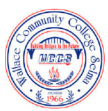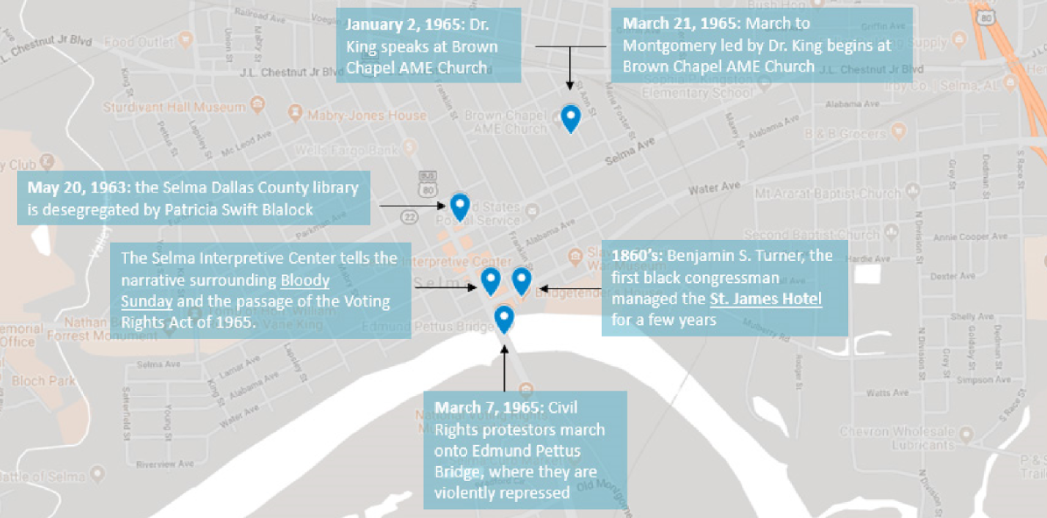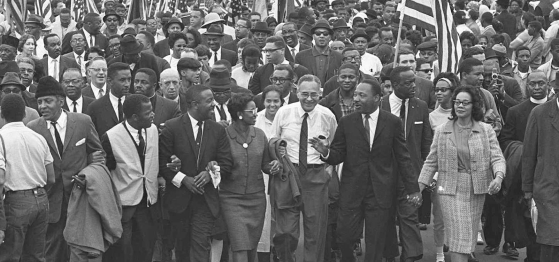


45
permanent
jobs
90%
LMI Jobs
Promote tourism
and encourage
local businesses
Increase payroll of local
community, injecting wealth and
resources in the neighborhood
Economic
Development
Impacts
The City of Selma, through its Master Plan, hopes to retain the steady flow of tourists in Dallas County through hotels, restaurants and other attractions such as historic sites to increase local economic participation and generate a stimulus that revitalizes the region. The reopening of the St. James was a top priority for the Selma Redevelopment Authority (SRA), Mayor and City Council as they viewed the redevelopment of this historic civil rights landmark as essential to stabilizing the city’s population level and its economy. The St. James Hotel is the epicenter of these ambitions; its history as a hotel from the 19th century, its unique location on the Alabama River, its proximity to various historic sites and tourist attractions and its potential to attract tourism and generate revenue under management by Hilton made it one of the most important assets to develop for the Comprehensive Community Master Plan.


Dr. King leading the march to Montgomery on March 21, 1965

The “Bloody Sunday” march on Edmund Pettus Bridge, March 7, 1065
